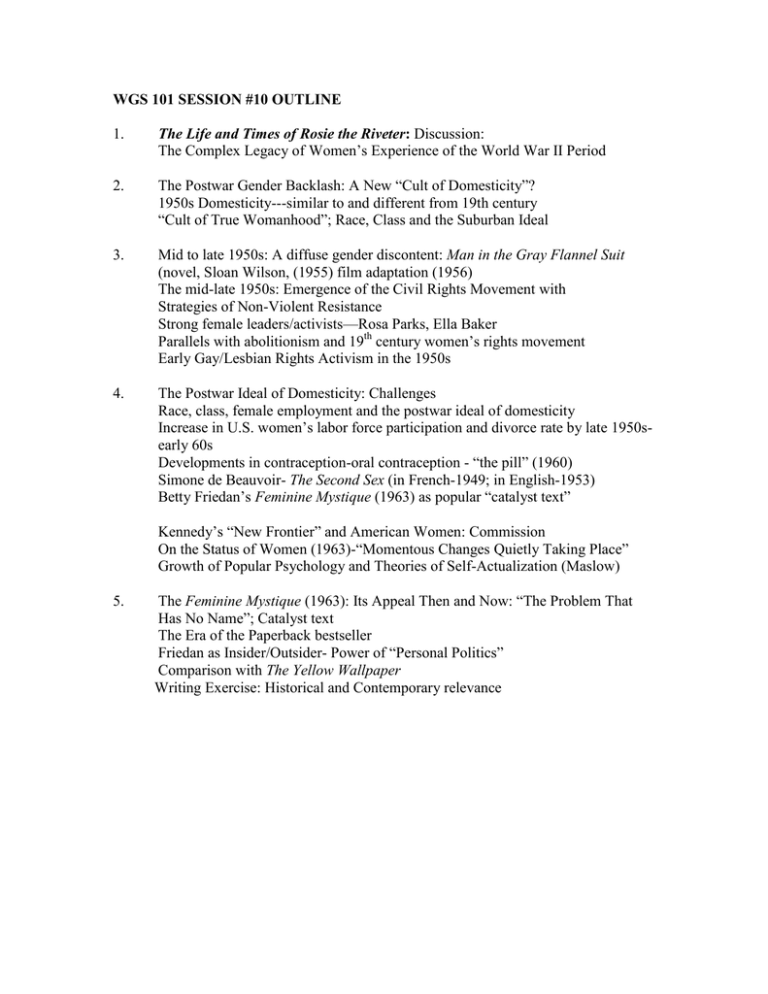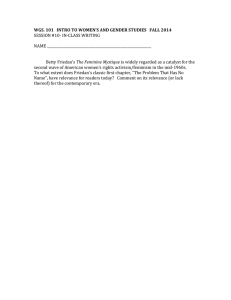WGS 101 SESSION #10 OUTLINE Discussion:
advertisement

WGS 101 SESSION #10 OUTLINE 1. The Life and Times of Rosie the Riveter: Discussion: The Complex Legacy of Women’s Experience of the World War II Period 2. The Postwar Gender Backlash: A New “Cult of Domesticity”? 1950s Domesticity---similar to and different from 19th century “Cult of True Womanhood”; Race, Class and the Suburban Ideal 3. Mid to late 1950s: A diffuse gender discontent: Man in the Gray Flannel Suit (novel, Sloan Wilson, (1955) film adaptation (1956) The mid-late 1950s: Emergence of the Civil Rights Movement with Strategies of Non-Violent Resistance Strong female leaders/activists—Rosa Parks, Ella Baker Parallels with abolitionism and 19th century women’s rights movement Early Gay/Lesbian Rights Activism in the 1950s 4. The Postwar Ideal of Domesticity: Challenges Race, class, female employment and the postwar ideal of domesticity Increase in U.S. women’s labor force participation and divorce rate by late 1950searly 60s Developments in contraception-oral contraception - “the pill” (1960) Simone de Beauvoir- The Second Sex (in French-1949; in English-1953) Betty Friedan’s Feminine Mystique (1963) as popular “catalyst text” Kennedy’s “New Frontier” and American Women: Commission On the Status of Women (1963)-“Momentous Changes Quietly Taking Place” Growth of Popular Psychology and Theories of Self-Actualization (Maslow) 5. The Feminine Mystique (1963): Its Appeal Then and Now: “The Problem That Has No Name”; Catalyst text The Era of the Paperback bestseller Friedan as Insider/Outsider- Power of “Personal Politics” Comparison with The Yellow Wallpaper Writing Exercise: Historical and Contemporary relevance MIT OpenCourseWare http://ocw.mit.edu WGS.101 Introduction to Women's and Gender Studies Fall 2014 For information about citing these materials or our Terms of Use, visit: http://ocw.mit.edu/terms.

